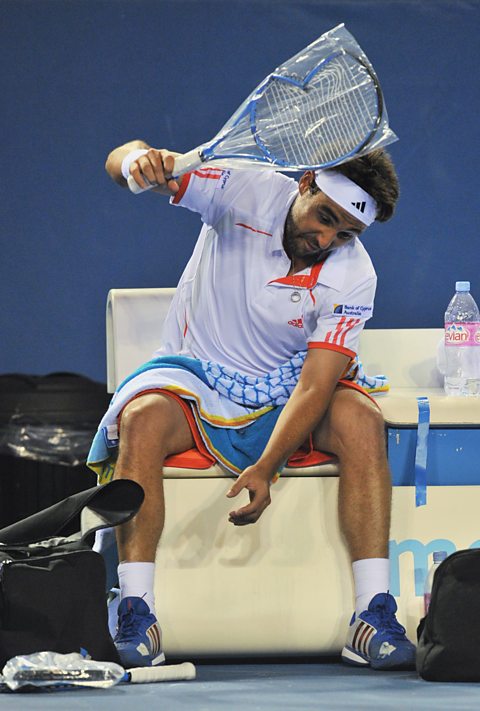How mental factors interact with other factors
How mental factors interact with emotional factors
Primary mental factor: decision-making
Secondary emotional factor: anger

Consider a tennis rally: performers might make the wrong decision such as:
- playing a shot to the wrong area of the court
- selecting the wrong type of shot to play
When either of these happen, it often leads to losing the rally which could make the performer angry. This is an example of how decision-making could therefore relate to anger.
- Making the incorrect decision on where to play your shot during a tennis rally can lead to you getting angry.
- This means that by wrongly deciding to play the shot to your opponent's strong forehand, you could lose the rally and get frustrated with yourself for making a poor shot selection.
- This then leads to you smashing your racket in frustration and being warned about your conduct by the umpire.
How mental factors interact with social factors
Primary mental factor: motivation
Secondary social factor: team dynamics
Consider a team sport such as basketball. A performer who lacks the motivation to give their full effort whilst chasing back to their defensive half, can often leave their teammates exposed to fast breaks.
This could then cause their team chemistry to drop as their teammates begin to turn on them and criticise them for their lack of desire to help the team's cause. This is an example of how low levels of motivation can negatively impact team dynamics.
- Having low levels of motivation to win could negatively impact your team's dynamics when the opposition are starting a fast break against your side in basketball.
- Not having great levels of desire to win means that you do not try your hardest to chase back. This leaves your team lacking in support and youe concede a basket on the fast break.
- This leads to your team turning on you and falling out with you on court for your lack of effort.
How mental factors interact with physical factors
Primary mental factor: anxiety
Secondary physical factor: accuracy

Let's look at a high pressure moment in rugby: when a penalty is awarded to put your team in the lead.
In such high pressure moments, it is important that you can control your somatic anxietyThe physical symptoms of anxiety., such as muscular tension in your kicking leg.
Doing so will allow your body to relax which:
- helps your kicking leg move freely
- increases the likelihood of your kick being accurate
This is an example of how controlling your anxieties can help boost your accuracy.
- Controlling your somatic anxieties can help boost your accuracy when taking a match-defining penalty kick in rugby.
- This means that your body will stay relaxed and your kicking leg is free from muscular tension. This causes it to swing freely and your shot is accurate.
- This leads to your shot going between the posts and your team taking the lead.
More guides on this topic
- Factors impacting on performance - Introduction
- Impact of mental factors on performance
- Impact of emotional factors on performance
- Impact of social factors on performance
- Impact of physical factors on performance - Fitness
- Impact of physical factors on performance - Skills
- Impact of physical factors on performance - Tactics